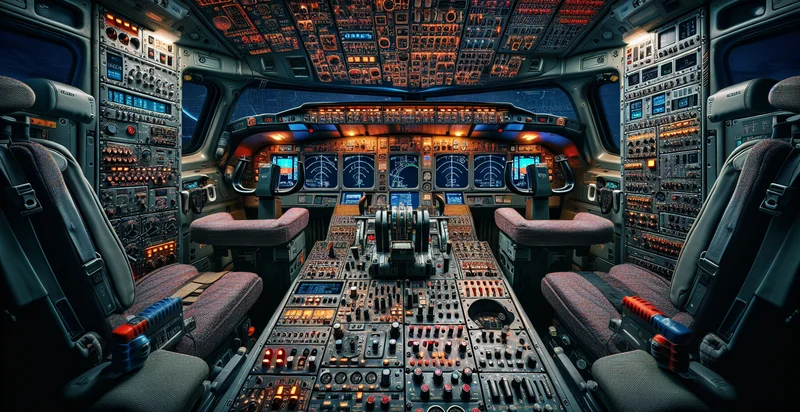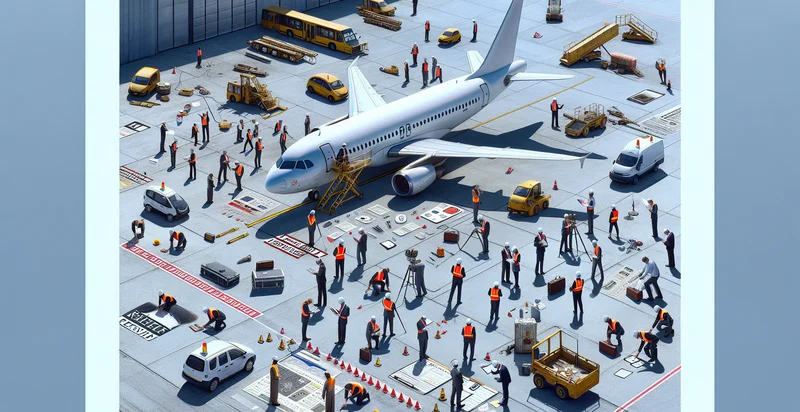Identify cockpit layout analysis
using AI
Below is a free classifier to identify cockpit layout analysis. Just upload your image, and our AI will predict what cockpit layout category it belongs to - in just seconds.

Contact us for API access
Or, use Nyckel to build highly-accurate custom classifiers in just minutes. No PhD required.
Get started
import nyckel
credentials = nyckel.Credentials("YOUR_CLIENT_ID", "YOUR_CLIENT_SECRET")
nyckel.invoke("cockpit-layout-analysis", "your_image_url", credentials)
fetch('https://www.nyckel.com/v1/functions/cockpit-layout-analysis/invoke', {
method: 'POST',
headers: {
'Authorization': 'Bearer ' + 'YOUR_BEARER_TOKEN',
'Content-Type': 'application/json',
},
body: JSON.stringify(
{"data": "your_image_url"}
)
})
.then(response => response.json())
.then(data => console.log(data));
curl -X POST \
-H "Content-Type: application/json" \
-H "Authorization: Bearer YOUR_BEARER_TOKEN" \
-d '{"data": "your_image_url"}' \
https://www.nyckel.com/v1/functions/cockpit-layout-analysis/invoke
How this classifier works
To start, upload your image. Our AI tool will then predict what cockpit layout category it belongs to.
This pretrained image model uses a Nyckel-created dataset and has 20 labels, including Analog Cockpit Layout, Commercial Airplane Cockpit Layout, Control Yoke Cockpit Layout, Conventional Cockpit Layout, Custom Cockpit Layout, Digital Cockpit Layout, Dual Cockpit Layout, Enclosed Cockpit Layout, Ergonomic Cockpit Layout and Fighter Cockpit Layout.
We'll also show a confidence score (the higher the number, the more confident the AI model is around what cockpit layout category it belongs to).
Whether you're just curious or building cockpit layout analysis detection into your application, we hope our classifier proves helpful.
Related Classifiers
Need to identify cockpit layout analysis at scale?
Get API or Zapier access to this classifier for free. It's perfect for:
- Pilot Training Simulator Feedback: This function can be utilized to analyze cockpit layouts in pilot training simulators. By identifying and classifying discrepancies between the designed layout and actual usage, trainers can optimize training environments to enhance pilots' readiness and real-life performance.
- Cockpit Design Evaluation: Aviation manufacturers can leverage this classification function to assess new cockpit designs. It enables the identification of design flaws or inefficiencies early in the development process, leading to improved safety and usability features in aircraft cockpits.
- Regulatory Compliance Verification: Regulatory bodies can use this function to ensure that cockpit layouts comply with aviation standards. By classifying layouts against established norms, it streamlines the approval process for new aircraft models and modifications, enhancing safety across the industry.
- Maintenance and Inspection Efficiency: Airlines can integrate this function during maintenance inspections to verify that the cockpit layout remains compliant and operational. By detecting unauthorized changes or wear-and-tear, it aids in maintaining safety standards and improving maintenance protocols.
- User Experience Improvement: This function can help analyze pilot and co-pilot interactions with cockpit layouts. By classifying different cockpit setups, airlines can identify which designs promote better ergonomics and workflow, ultimately enhancing pilot efficiency and reducing errors.
- Accident Analysis: In the case of aviation accidents or incidents, this function can provide valuable insights into the cockpit layout’s role. By classifying the cockpit and assessing layout effectiveness, it assists investigators in determining potential design-related factors contributing to accidents.
- Customized Cockpit Solutions: Aircraft operators can use this function to tailor cockpit layouts to specific mission requirements. By analyzing various layout configurations and classifying them based on operational needs, operators can create customized environments that enhance mission effectiveness and crew comfort.


